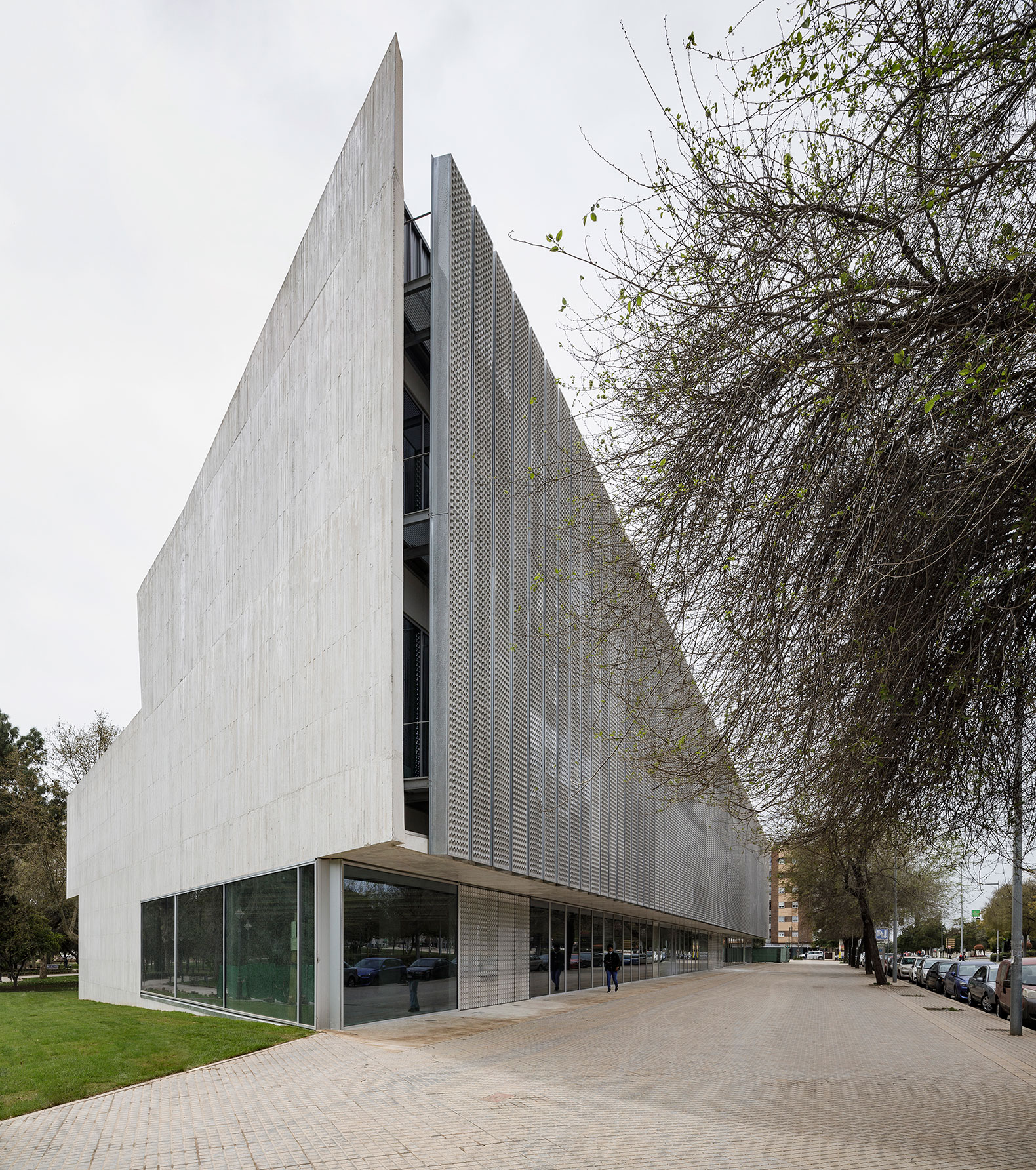The footprint of the building refers to the trapezoidal shape of a historical garden originating from the 17th century, the Gardens of Agriculture. The building is staggered and open facing the park, and serene and abstract towards the avenue where it is shown with a continuous plane, an aluminium lattice facade that characterizes the image of the project accentuated by a continuous balcony, creating a covered space in plan low which in turn enhances the length of this pavilion building.
Its program organizes a diverse program on the entrance floor with a study room, a multipurpose room and a newspaper library; On a higher level is the main reading room with privileged views of the park. Inside, the spaces are governed by a series of geometric skylights and are endowed with a diaphanous layout thanks to which a large-scale perceptive experience of the place is highlighted.

Córdoba Public Library by Paredes Pedrosa Arquitectos. Photograph by Fernando Alda.
Description of project by Paredes Pedrosa Arquitectos
The Library is located in a privileged site, an urban park in Cordoba on the border of a wide avenue that covers the railway network. It builds up the continuity with the garden visually linked to the large trees and on its opposite side, the main façade is a continuous and precise lattice facing the city, building the park's limit with the avenue. This three-dimensional aluminium lattice screen unifies views and lights and lends a serene and abstract image to the avenue. The trapezoidal plan adapts to the historic layout of the 18th century Agriculture Gardens, respecting the existing trees unfolding its height from the traffic road to the park. The pavilion image of the Library towards the park is lightened by a balcony that extends the reading spaces to the garden between the tops of the trees and thus introduces the vision of the green landscape inside.
The interior is a continuous space under a plied metal roof with deep skylights that filter the light. The program adapts to the difference in level between the avenue and the garden, fitting into the gap in the children's space, visible from the upper level of the main entrance, that integrates an SX caliphal stone wall that articulates the interior. An outside amphitheatre is carved between the garden and the Library where it is possible to go out to read. The study room, multipurpose room and informal reading areas are arranged on the access floor. The main reading room occupies the first level with views towards the park, facing south and shaded by the deep linear balcony. In this reading space, it is easy for the reader to find the different specific areas under the geometric skylights with the permanent presence of the park from which the Library is almost invisible among the trees that are the true protagonists.




















































